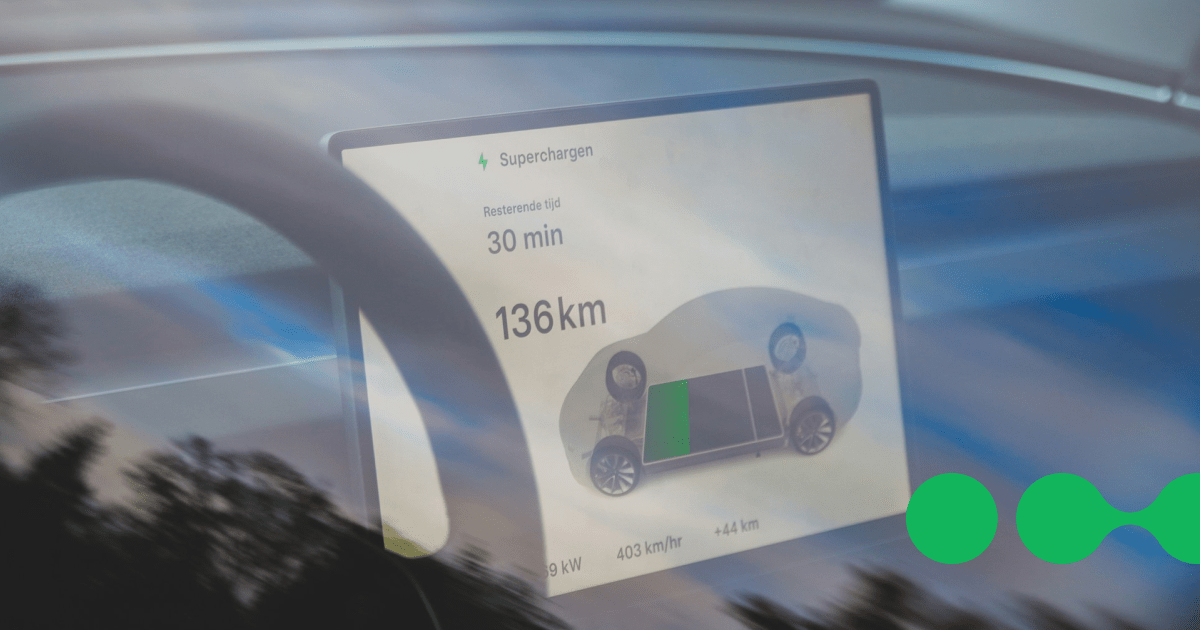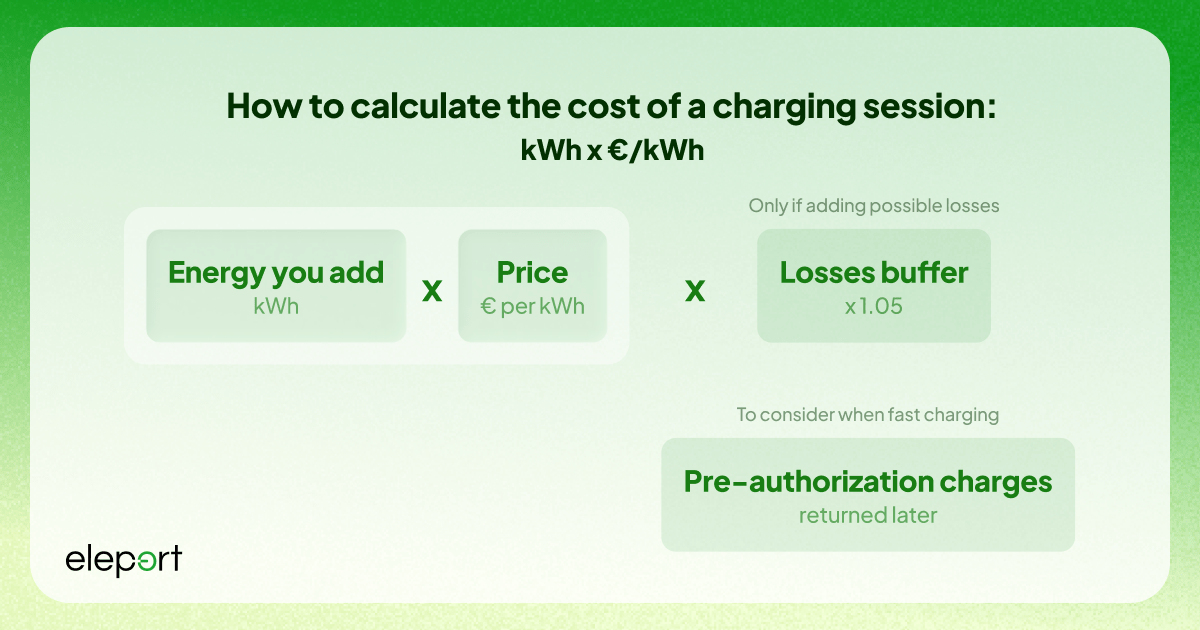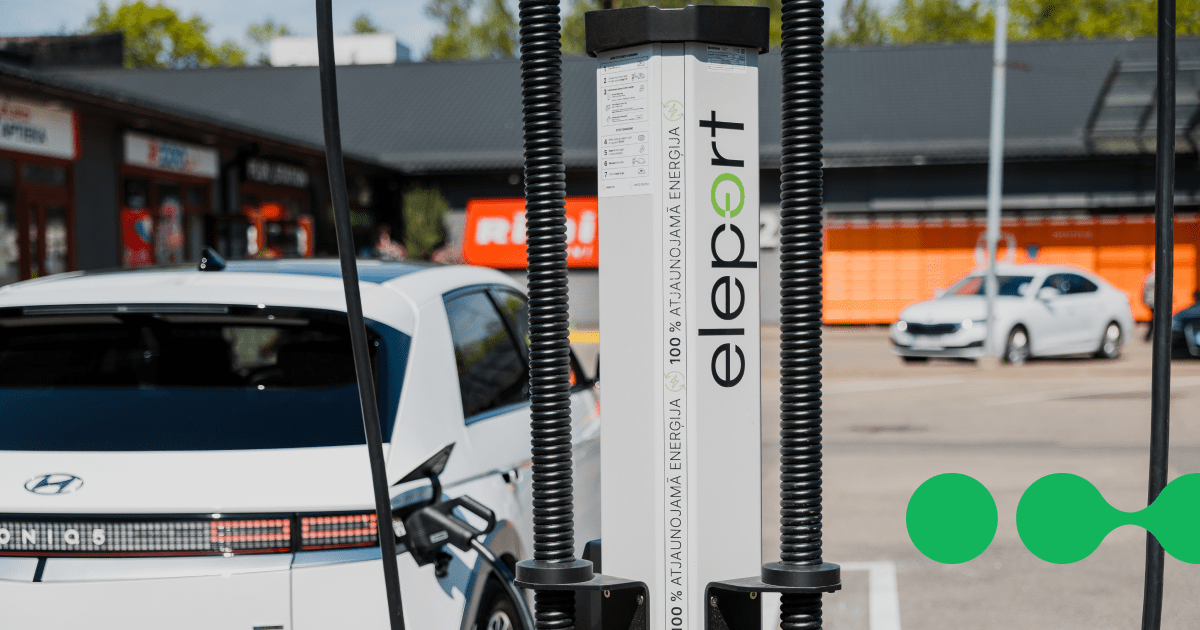Making the switch to an electric vehicle offers the promise of significant savings on “fuel” costs. However, to truly understand those savings and manage your budget effectively, you need to know how to calculate your EV charging costs accurately.
Here’s the game plan.
First, we define the variables that drive the price you pay. Next, we compare home and public options with worked sums. Then we map Eleport pricing by country to real numbers you can plug into trips. By the end, you will know exactly how to calculate EV charging cost at public stations and at home for daily commutes and longer road trips.
Main Factors That Influence Charging Cost

Before we crunch numbers, we align on the inputs. Each factor below ties directly to the formula used later. Now we examine what moves the final EV charging price and why it matters for planning.
- Battery size (kWh). The larger the battery pack, the more energy you buy for a full charge. A 60 kWh pack requires ~60 kWh (kilowatt-hours) of energy from the meter, plus a small overhead for charging losses, if charged from 0% to 100%
- Energy price (€/kWh). Home tariffs vary by country and time of day. EU average household electricity sat near €0.287/kWh in the second half of 2024, but your local rate may be lower or higher. Meanwhile, public networks are priced by kWh and by charging speed tier.
- Charging speed tier and session type. AC (up to 22 kW) is usually cheaper per kWh than DC fast and ultra-fast charging. Eleport shows price bands per tier and per country on the pricing page.
- Charging efficiency. We can expect an efficiency of around 90–95%. We’ll add 5–10% overhead to cover losses and pre-conditioning to be on the safe side.
- Driver behaviour. Topping up often at home during off-peak hours beats deep discharges on premium ultra-fast stops. Eleport’s home and public guides explain why timing and tier selection move the final figure.
Handy formula
Estimated session price = Battery kWh to add × €/kWh (price) × 1.05 (losses, if applicable)

If you only need to add 40 kWh to reach your target state of charge, plug that into the formula. For a rough full-to-full estimate, use total battery capacity, but note that you usually charge only a certain range of the overall battery.
If you are already charging at the fast charger and trying to figure out how much you’ll pay for that session, you don’t need to add the 5% losses, because you will be charged exactly for the amount of kWh added that you see on the screen while charging. In this case, the session price itself would be Energy to add (kWh) x Price (€/kWh).
Also note that regardless of how much you charge, there is a pre-authorisation charge at nearly all fast-charging stations these days, which means you’ll be charged a pre-set amount, in Eleport’s case 35€ per session (200 PLN in Poland).
When your session ends, you will only be charged for the actual cost of charging, and the rest of the reserved amount is released back to your account. The time of receiving that back depends on the banks.
Why do charging operators do that pre-authorisation charge? It is a standard practice in the industry and is done to reduce the financial risk, as it makes sure customers have enough funds in their bank account to cover the cost of charging.
Charging at Home vs Public Stations
You now know the variables. The same formula does the heavy lifting in two contexts: home charging EV cost as the stable baseline, and public charging as the flexible, time-saving option.
Home charging price: the baseline
Home charging is about stability and control. You set schedules, possibly target off-peak windows, and often charge while you sleep. To estimate the price of a full charge at home, multiply the battery capacity by your tariff and add 5% for losses. Eleport’s home guide shows an example for a 60 kWh pack at €0.25/kWh: 60 × 0.25 × 1.05 ≈ €15.75. If your night rate is €0.18, the same full charge lands near €11.34.
One more perk: home charging supports battery health with so-called gentler power, which can help the long-term total cost of ownership, especially as the battery temperature in such cases is usually not too hot or cold for a charge. You can learn more in our “Should I charge my EV to 100%?” research article.
Public stations: pay based on charging speed and convenience
Public charging of electric vehicles adds flexibility. You trade some price for faster turnarounds and location convenience. Pricing often depends on the power tier and also on the charging network used. AC charging prices often sit lower per kWh than DC. Ultra-fast carries a premium for time saved. The same formula works here. If you add 30 kWh on a DC ultra-fast charger at €0.53/kWh: 30 × 0.53 × 1.05 ≈ €16.70. You buy time, not just energy.
Worked examples (Europe)
• Commute top-up at home
Adding 15 kWh after work at €0.20/kWh: 15 × 0.20 × 1.05 ≈ €3.15. Eleport’s home charging guide uses the same logic as off-peak totals.
• Weekend shopping on AC
Adding 25 kWh on an 11 kW AC charger at €0.32/kWh: 25 × 0.32 × 1.05 ≈ €8.40. If your car only accepts 11 kW AC, the price per kWh stays the same; you just spend a longer time at the store. Eleport notes that many cars don’t take 22 kW AC, so the time varies based on the onboard charger that the car comes with. There are also 11 kW – 22 kW DC chargers out there, especially near amenities like shopping and gyms, which usually have a similar price, but in this case, your car will accept the power fully and is not dependent on the onboard charger.
• Motorway sprint on DC 200–400 kW
Adding 40 kWh at €0.53/kWh: 40 × 0.53 × 1.05 ≈ €22.26. Ultra-fast charging saves time on road trips, which in turn comes at a premium per kWh.
Pro tip: mix strategies. Fill most of your energy needs at home, then buy only what you need on a fast charging stop to reach your destination, or the next cheaper AC or DC charger.
Eleport EV Charging Prices (Europe snapshot)

You’ve seen how the charging price calculation formula works. Now we move to real numbers. Eleport pricing varies by country and by tier. To make scanning easy, we have made a compact table with illustrative rates below, along with two ready-made use cases (60 kWh full, 40 kWh top-up). Always check the live pricing before a session, since the charging prices may vary based on the site, the country, and the power tier.
| Country | AC Rate | 60 kWh with AC | 40 kWh with AC | DC Rate | 60 kWh with DC | 40 kWh with DC |
|---|---|---|---|---|---|---|
| Estonia | €0.29/kWh | €17,4 | €11,6 | €0.42/kWh | €25,2 | €16,8 |
| Lithuania | €0.27/kWh | €16,2 | €10,8 | €0.36/kWh | €21,6 | €14,4 |
| Latvia | €0.31/kWh | €18,6 | €12,4 | €0.39/kWh | €23,4 | €15,6 |
| Croatia, Slovenia | €0.34/kWh | €20,4 | €13,6 | €0.53/kWh | €31,8 | €21,2 |
| Poland | €0.47/kWh | €28,2 | €18,8 | €0.56/kWh | €33,6 | €22,4 |
(Includes a 5% buffer for typical losses; illustrative only.)
How to Calculate EV Charging Cost Step by Step
We’ve defined the inputs and walked through real prices. Now let’s focus on a simple workflow you can reuse every time. It turns a messy decision into a quick, confident call.
- Find your target energy. Battery capacity × the percentage you want to add. A 60 kWh pack going from 20% to 80% needs 60 × 0.60 = 36 kWh to be charged.
- Check the rate. Open the Eleport pricing card and pick the correct tier for your session.
- Add losses. Multiply by 1.05 to cover typical efficiency. This is optional and can vary.
- Do the math. Target kWh × €/kWh × 1.05.
- Compare options. If DC is premium at that moment, add only what you need to reach a cheaper AC charger or your home wallbox. For trip legs, repeat the workflow for each stop. Some of the best EV route planning apps help you calculate exactly how much battery you’ll need.
How to calculate the charging cost for EV with a formula
You have the workflow. Now, let’s take a look at the shortest version for quick decisions. For a top-up: kWh needed × live €/kWh × 1.05. For a full battery: capacity × live €/kWh × 1.05. Keep a small note of your tariff and a couple of public tiers you use most often. Speed of thought, speed of charge.
How to calculate the cost of charging EV on a road trip
Trip planning adds one more variable: distance. Now, we offer a fast way to price the full itinerary. Estimate energy for the route: distance (km) ÷ efficiency (km/kWh). Multiply the result by a blended €/kWh based on your planned mix of AC and DC. Add a best-case 10% buffer for weather or detours.
Example: 900 km at 6 km/kWh → 150 kWh needed. If half your energy is AC at €0.32 and half DC at €0.53, the blended rate ≈ is €0.425. Trip energy price would be ≈ 150 × 0.425 = €63.75, then add losses expected.
Secondary considerations that move the final number
You can already price a session. Now we examine the seasonal and trip-specific factors that refine the total energy you need, and the cost of it.
Efficiency and climate
Cold mornings, high speeds, headwinds, and roof boxes or towing all reduce efficiency. That means fewer kilometers per kWh and more frequent stops. Plan conservatively in winter and watch actual consumption after the first leg to recalibrate range expectations.
Pricing structures
Most European sites use pure energy pricing per kilowatt hour, which keeps comparisons simple across speeds and countries. Still, confirm the tier and any session notes on the charging network page or app before plugging in.
Time vs money
If time is the KPI, pay for DC fast charging and keep moving. If price is the KPI, lean on home AC and slower public chargers while you work, shop, or sleep. A smart mix lowers your blended rate without slowing your day. For macro context on travel patterns, see this concise overview from Forbes on trip economics and destination charging habits.
Conclusion

Once you know the pack capacity, the live €/kWh, and a small efficiency buffer, you know how to calculate EV charging cost. Use the formula, compare tiers, and check the Eleport pricing on the app or on the web before every session. The approach scales from commute top-ups to continental trips. Share this method with anyone who needs it, and keep your plan tight, simple, and transparent.
FAQs
How to calculate charging cost for EV?
Multiply the energy you plan to add by the live price per kWh and include about 5% for losses. Example: 20 kWh × €0.32 × 1.05 ≈ €6.72. The Eleport price card shows the exact figure for the station and tier.
What is the average cost of charging an EV?
At home, many markets sit near €0.20 to €0.30 per kWh, depending on taxes and time-of-use. On public networks, AC often lands below DC, while ultra-fast sits at the top of the range.
What is the cost of a home EV charging station?
In Europe, a typical 7 kW wallbox plus a standard installation usually falls between €600 and €1,500. Complexity, cable runs, and any panel upgrades drive variance.
Do higher states of charge change the price?
The per-kWh price stays constant, but power tapers at a high state of charge. That can stretch time on DC. For fast trips, target 10 to 70 per cent windows.
How can I reduce spending without slowing down too much?
Anchor most energy at home off-peak. Use DC for brief mid-journey boosts. Blend both for a lower average €/kWh while protecting your schedule.



